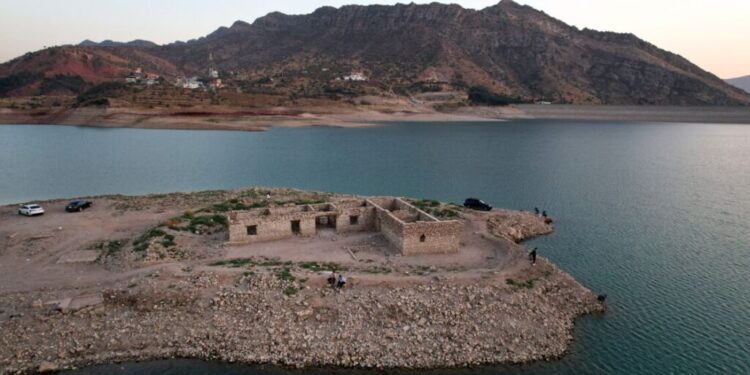This year, with the great drought that rages around the world, unusual phenomena have taken place here and there, due to the remarkable decrease in water recorded in rivers and rivers.
In Iraq, Kurdistan precisely, the very low level reached at the Mosul tank resulted in the appearance of a 3400 -year -old city.
These are the vestiges of the village of Guiri Qasrouka, engulfed under the waters of a dam 36 years ago, which suddenly re -emerged in the open air because of the drop in the level of water caused by drought.
The reservoir dam, located two kilometers north of the city of Dohouk, was built from 1985, leading to the departure of the inhabitants of Guiri Qasrouka. Since then, the village has been under the waters that have been used to irrigate agricultural land in the region.
But “because of the drought”, the water level dropped by seven meters in September compared to the same period last year, releasing the vestiges of the village.
Today, the remains of Guiri Qasrouka can be visited on dry foot and in particular a house, the only one whose stone walls are still standing. In places, algae and dried shells still hang on to stone.
In Wales, the same phenomenon occurs with Lake Vyrnwy which was so dried up this summer that a village has resurfaced from the depths.
This discovery is the consequence of the hot weather and the low rainfall that affects the country. On July 18, Wales recorded the hottest day in its history.
At the end of the 19th century, the city of Liverpool, in full expansion, needed a new source of water. The Vyrnwy river valley is then chosen for the construction of a dam and a tank.
Consequence: the village of Llanwdyn is flooded by the waters, despite the opposition of the inhabitants. The 37 houses, the church, the two chapels, the three pubs and a few shops were engulfed in 1880 by the Liverpool Corporation Waterworks.
A new village is rebuilt lower in the valley to rehove the inhabitants.
The tank is generally full of 90% of its capacity. Last summer, this figure fell 77%. In 2022, it was only 60%.
And the water level is so low that vestiges of the ancient village of Llanwdyn have resurfaced, revealing a bridge, stone walls and foundations of missing buildings.








